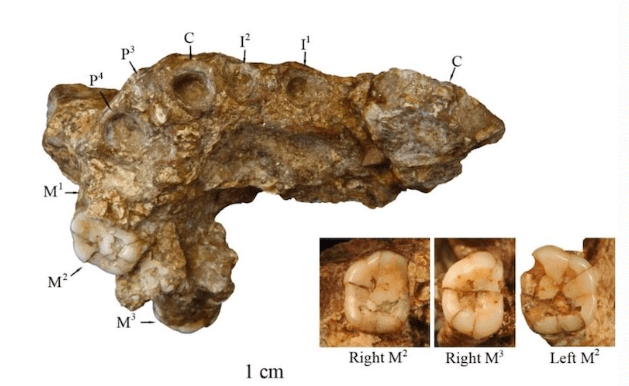Scientists say the skull found in China is more than 1.6 million years old and could be the oldest human population in the region.

Researchers used micro-CT, geometric morphometry and classical morphology techniques to investigate the remains of the jaw and five teeth from the skull unearthed in the Gongwangling region of China.
The site is located in the vast plains on the northern slopes of the Quinling Mountains (Shaanxi province in central China) and was discovered in 1963 by scientist Woo Ju-Kang. The age of the site was reassessed by regional paleomagnetism studies in 2015.
These data suggest that Gongwangling is more than 1.6 million years old, and may therefore belong to one of the first humans to have lived in what is now China.
According to new research published in the Journal of Human Evolution, there are similarities between the teeth found at Gongwangling and those found at more recent archaeological sites in China: Meipu and Quyuan River Mouth. But there is also some variability, suggesting a certain diversity among the Homo erectus populations that colonized Asia during the Pleistocene.
The importance of this new study lies in the lack of knowledge about the early colonization of Asia. The Dmanisi region (Republic of Georgia) has provided crucial evidence of Asia’s earliest inhabitants arriving from Africa around 2 million years ago.
But much more information is needed to link Dmanisi with the classical Homo erectus populations of China (Hexian, Yiyuan, Xichuan or Zhoukoudian) that inhabited this large continental mass 400,000 to 800,000 years ago.
“The Gongwangling site helps to close this enormous time gap and shows that Asia could have been settled by successive populations of Homo erectus species at different moments of the Pleistocene,” says José María Bermúdez de Castro, coordinator of the Paleobiology Program at CENIEH.
Characteristics of Homo erectus
The Gongwangling skull meets all the characteristics described for Homo erectus: low and very long skull with very thick bones protecting a brain of about 780 cubic centimeters; steeply sloping anterior face, prominent brow arches forming a kind of twin visor above the eyes; flattened parietals rising at the apex to form a sagittal spine; maximum parietal thickness at the skull base. The posterior part of the skull found in Gongwangling is missing, but the reconstruction work shows how this bone abruptly rotated and formed the skull base.
Pan, L., Zanolli, C., Martinón-Torres, M., de Castro, J. M. B., Martín-Francés, L., Xing, S., & Liu, W. (2022). Early Pleistocene hominin teeth from Gongwangling of Lantian, Central China. Journal of Human Evolution, 168, 103212.




